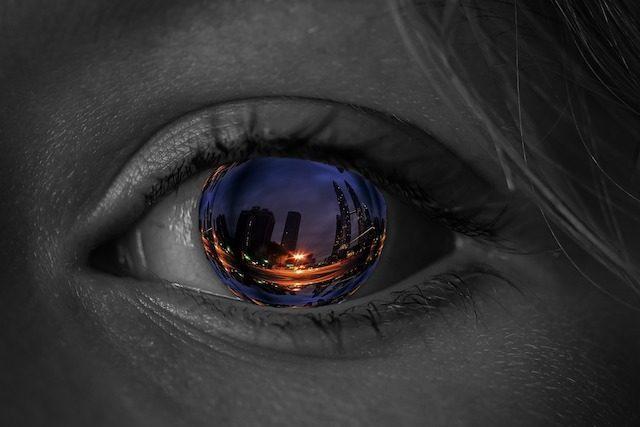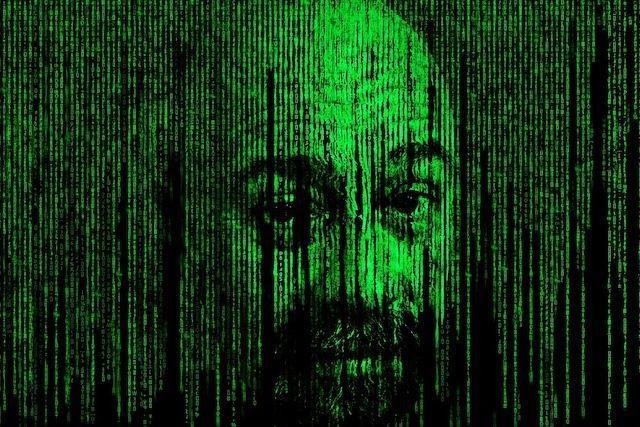How do we know what reality is? It’s a question that philosophers have been asking for thousands of years. With the advancements in computers, that question has been given an upgrade: what if life is just a computer simulation
1. Computers Will Be Powerful Enough

All the way back in 1965, Gordon Moore, one of the founders of Intel, said that the number of microprocessor transistors on circuit boards would double every year. He revised his statement 10 years later, saying it would double every two years.
Today, a number of transistors isn’t as important as making them smaller, but the theory that computing power essentially doubles every year is still relevant. Several experts in computers find that it doesn’t exactly double, but it’s close.
If we maintain that rate of advancement, eventually computers will be powerful enough to run reality simulators. Rich Terrile, a computer expert with NASA, thinks that within 10 years we will have computers that will be able to simulate a human lifetime that lasts about 80 years. It would include every thought that the simulated person ever had, and they wouldn’t know that they were in a simulation. Ergo, it might be possible that is what you’re experiencing right now. Your life is just a first-person simulation and everything in it is
created by lines of code. Another possibility is that the universe is a simulation and we’re all characters in it. There have already been several universe simulators, but the most impressive one was performed by the Harvard-Smithsonian Center for Astrophysics. In 2014, they simulated the entire 13 billion year history of the evolution of the universe in just three months.
2. Reality Doesn’t Exist Until We Look at It

Let’s say you’re playing an open world video game, like World of Warcraft or Grand Theft Auto. What happens to an area of the map when no one is there? Nothing, right? It’s only when your character “moves” to that area that the system processes the lines of code creating the environment.
According to quantum mechanics, reality actually works in a very similar way. Subatomic objects that make up the foundation of reality are usually either waves or particles. However, there are some subatomic objects that can be both wave and particle-like. This includes light and objects with the mass similar to electrons. When these subatomic objects aren’t being observed or measured they sit in a dual state. Then, when they are measured, for lack of a better word they “decide” whether they’ll be a wave or particle-like. This is unusual because logically, their nature should dictate their state, not whether they are being observed. It also means that the foundations of reality don’t exist until we are looking at it.
Physicists aren’t sure why our observation affects how they “decide,” but it is eerie evidence that reality may not be exactly what we think it is.
3. General Relativity and Quantum Mechanics Reconcile if the World is a Hologram

One of the biggest arguments for the simulation theory is that our universe is actually two-dimensional and the third dimension is simply a hologram created by very thin, vibrating strings. This isn’t a whole lot different than lines of code creating a three-dimensional environment in a video game.
Earlier in 2017, a study was published that showed a two-dimensional world is possible and it would help solve one of the biggest problems in physics: how to reconcile Albert Einstein’s theory of general relativity and quantum mechanics. They are the two dominant theories of physics, but they are at odds with each other. Relativity is great at explaining big things like the expansion of the universe and gravity, while quantum mechanics is how nature works at a tiny level, like how uranium decays. In a three-dimensional world they are incompatible, but in a two-dimensional universe, they can be reconciled.
4. Claude Shannon’s Coding

Sylvester James Gates, Jr. is a theoretical physicist who researches stuff like supersymmetry, supergravity, and superstring theory at a level that is nearly impossible for laypeople to understand. We imagine you have to be super people to really get theGates said that he was working on superstring equations with adinkras, which are symbols that are used in supersymmetry algebra, and he supposedly found some possible evidence that the basic foundation of our reality may just be made up of coding. In the equations, he found coding from the 1940s that was written by Claude Shannon, who is considered the father of the information age.
Gates says that: “[an] unsuspected connection suggests that these codes may be ubiquitous in nature and could even be embedded in the essence of reality. If [so], we might have something in common with the Matrix science fiction films, which depict the world where every human being’s experience is the product of a virtual reality–generating computer network.”
5. The Odds Aren’t in Our Favor

According to Nick Bostrom of Oxford University, there are only three possible outcomes for human civilization. First, humans will go extinct before creating ancestor simulators. The second possibility is that humans will develop the technology, but for whatever reason, they don’t run many simulations. Both of those outcomes mean life is real and we aren’t living in a simulation.
The third possibility is that there is a good chance we are living in a simulation. It’s considered a good chance because, while it is certainly possible that humans could die off before learning how to build reality simulators, if future humans did create them then they would probably run them because of humanity’s relentless pursuit of knowledge. They could run an infinite amount of simulations, which would contain every thought and action by every being in the universe for the entire life of the universe.
If there is one reality running infinite simulations, then what are the odds that we’re in the one “real” reality, or one of the infinite simulations?
1. Computers Will Be Powerful Enough

All the way back in 1965, Gordon Moore, one of the founders of Intel, said that the number of microprocessor transistors on circuit boards would double every year. He revised his statement 10 years later, saying it would double every two years.
Today, a number of transistors isn’t as important as making them smaller, but the theory that computing power essentially doubles every year is still relevant. Several experts in computers find that it doesn’t exactly double, but it’s close.
If we maintain that rate of advancement, eventually computers will be powerful enough to run reality simulators. Rich Terrile, a computer expert with NASA, thinks that within 10 years we will have computers that will be able to simulate a human lifetime that lasts about 80 years. It would include every thought that the simulated person ever had, and they wouldn’t know that they were in a simulation. Ergo, it might be possible that is what you’re experiencing right now. Your life is just a first-person simulation and everything in it is
created by lines of code. Another possibility is that the universe is a simulation and we’re all characters in it. There have already been several universe simulators, but the most impressive one was performed by the Harvard-Smithsonian Center for Astrophysics. In 2014, they simulated the entire 13 billion year history of the evolution of the universe in just three months.
2. Reality Doesn’t Exist Until We Look at It

Let’s say you’re playing an open world video game, like World of Warcraft or Grand Theft Auto. What happens to an area of the map when no one is there? Nothing, right? It’s only when your character “moves” to that area that the system processes the lines of code creating the environment.
According to quantum mechanics, reality actually works in a very similar way. Subatomic objects that make up the foundation of reality are usually either waves or particles. However, there are some subatomic objects that can be both wave and particle-like. This includes light and objects with the mass similar to electrons. When these subatomic objects aren’t being observed or measured they sit in a dual state. Then, when they are measured, for lack of a better word they “decide” whether they’ll be a wave or particle-like. This is unusual because logically, their nature should dictate their state, not whether they are being observed. It also means that the foundations of reality don’t exist until we are looking at it.
Physicists aren’t sure why our observation affects how they “decide,” but it is eerie evidence that reality may not be exactly what we think it is.
3. General Relativity and Quantum Mechanics Reconcile if the World is a Hologram

One of the biggest arguments for the simulation theory is that our universe is actually two-dimensional and the third dimension is simply a hologram created by very thin, vibrating strings. This isn’t a whole lot different than lines of code creating a three-dimensional environment in a video game.
Earlier in 2017, a study was published that showed a two-dimensional world is possible and it would help solve one of the biggest problems in physics: how to reconcile Albert Einstein’s theory of general relativity and quantum mechanics. They are the two dominant theories of physics, but they are at odds with each other. Relativity is great at explaining big things like the expansion of the universe and gravity, while quantum mechanics is how nature works at a tiny level, like how uranium decays. In a three-dimensional world they are incompatible, but in a two-dimensional universe, they can be reconciled.
4. Claude Shannon’s Coding

Sylvester James Gates, Jr. is a theoretical physicist who researches stuff like supersymmetry, supergravity, and superstring theory at a level that is nearly impossible for laypeople to understand. We imagine you have to be super people to really get theGates said that he was working on superstring equations with adinkras, which are symbols that are used in supersymmetry algebra, and he supposedly found some possible evidence that the basic foundation of our reality may just be made up of coding. In the equations, he found coding from the 1940s that was written by Claude Shannon, who is considered the father of the information age.
Gates says that: “[an] unsuspected connection suggests that these codes may be ubiquitous in nature and could even be embedded in the essence of reality. If [so], we might have something in common with the Matrix science fiction films, which depict the world where every human being’s experience is the product of a virtual reality–generating computer network.”
5. The Odds Aren’t in Our Favor

According to Nick Bostrom of Oxford University, there are only three possible outcomes for human civilization. First, humans will go extinct before creating ancestor simulators. The second possibility is that humans will develop the technology, but for whatever reason, they don’t run many simulations. Both of those outcomes mean life is real and we aren’t living in a simulation.
The third possibility is that there is a good chance we are living in a simulation. It’s considered a good chance because, while it is certainly possible that humans could die off before learning how to build reality simulators, if future humans did create them then they would probably run them because of humanity’s relentless pursuit of knowledge. They could run an infinite amount of simulations, which would contain every thought and action by every being in the universe for the entire life of the universe.
If there is one reality running infinite simulations, then what are the odds that we’re in the one “real” reality, or one of the infinite simulations?
0 comments:
Post a Comment